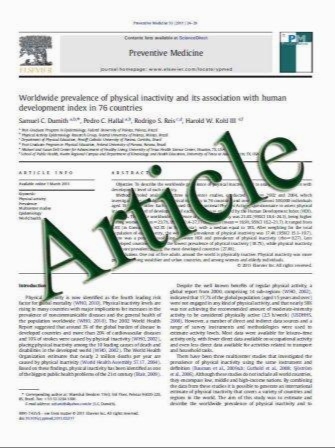Availability and use of hip protectors in residents of nursing homes
- نوع فایل : کتاب
- زبان : انگلیسی
- مؤلف : J. Klenk & S. Kurrle & U. Rissmann & A. Kleiner & S. Heinrich & H-H. Kِnig & C. Becker & K. Rapp
- چاپ و سال / کشور: 2010
Description
Summary Potential predictors of availability and use of hip protectors were studied in residents of 48 nursing homes. The likelihood of being offered a hip protector was reduced in men, in residents with very low or very high care needs, in residents with migration background, and in recipients of welfare aid. Introduction The purpose of this study is to analyze potential predictors of availability and use of hip protectors in residents of nursing homes. Methods In 48 German nursing homes, individual information on availability and use of hip protectors was collected from all institutionalized residents (3,924 residents; 78.2% women). Information on nursing home characteristics was obtained by telephone interview. The effect of individual variables and of nursing home characteristics on hip protector availability and use was estimated using multilevel logistic regression analyses. Results The prevalence of hip protectors being made available was 10.0% in women and 6.2% in men. Sixtyfour percent of those with a hip protector used it during the 4 weeks prior to the examination. The likelihood of being offered a hip protector was reduced in men (odds ratio (OR), 0.59; 95% confidence interval (CI), 0.43; 0.83), in residents with very low or very high care needs (OR, 0.32; 95% CI, 0.18; 0.56 and OR, 0.55; 95% CI, 0.38; 0.79, respectively), in residents with a migration background (OR, 0.30; 95% CI, 0.09; 0.99), and in recipients of welfare aid (OR, 0.60; 95% CI, 0.44; 0.81). Nursing home characteristics such as the size of the nursing home or staff participation rate in training measures had no effect on hip protector availability and use. Conclusion Predictors of hip protector availability were sex, the degree of care need, migration status, and welfare aid. The lower availability of hip protectors in residents with welfare aid and migration status may be an indicator for health inequality in the German health system.
Osteoporos Int (2011) 22:1593–1598 DOI 10.1007/s00198-010-1366-3 Received: 20 April 2010 / Accepted: 6 July 2010 / Published online: 4 August 2010


